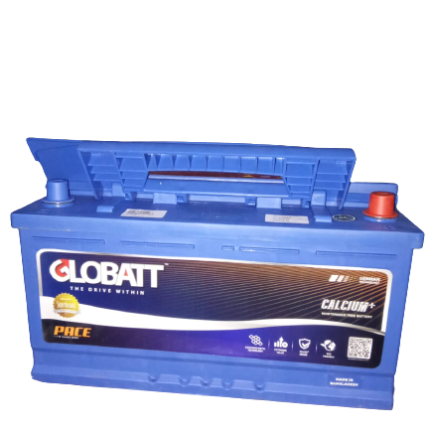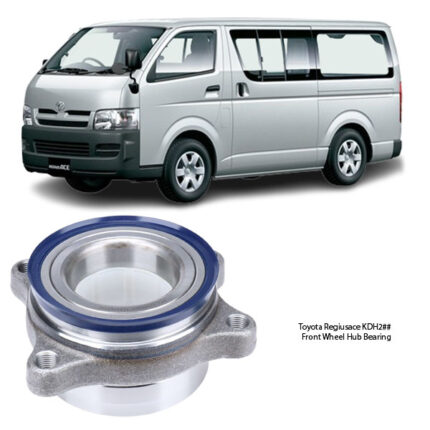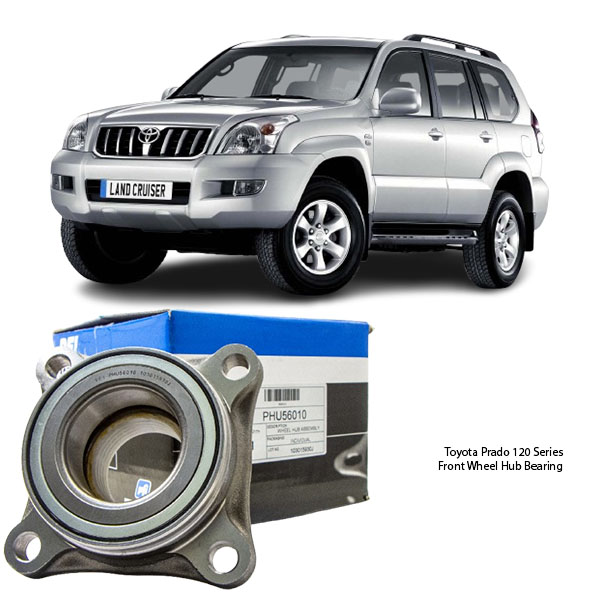-9%
Get Toyota Landcruiser Prado 120 Series PFI Front Wheel Hub Bearing PHU56010 in Kenya
The front wheel hub bearing is a critical component in a vehicle’s suspension and drivetrain system. It supports the wheel’s rotation with minimal friction, ensuring smooth movement and stability. The hub bearing is housed inside the wheel hub assembly, which connects the wheel to the vehicle’s suspension and steering system.
Over time, wheel hub bearings wear out due to friction, load, and external factors, leading to issues such as wheel wobbling, grinding noises, and reduced handling performance. Understanding the function, benefits, and maintenance of wheel hub bearings can help prevent costly repairs and unsafe driving conditions.
1. What is a Front Wheel Hub Bearing?
A front wheel hub bearing is a set of steel balls (ball bearings) or tapered rollers (roller bearings) enclosed in a metal ring, known as a race. It allows the wheel to rotate smoothly by reducing friction between the moving parts.
The hub bearing is a part of the wheel hub assembly, which includes:
- Wheel hub – The central mounting unit for the wheel.
- Hub bearing – Provides smooth wheel rotation.
- ABS sensor (in some models) – Monitors wheel speed for traction control and braking.
2. Functionality of the Front Wheel Hub Bearing
The front wheel hub bearing plays a crucial role in vehicle dynamics, contributing to:
✅ Wheel Rotation: Allows the wheel to spin with minimal resistance.
✅ Load Support: Supports the vehicle’s weight and absorbs road forces.
✅ Steering Stability: Ensures precise wheel alignment and smooth handling.
✅ Reduction of Friction: Prevents excessive heat buildup, which can cause premature wear.
✅ Shock Absorption: Dampens road vibrations for a comfortable ride.
3. Types of Front Wheel Hub Bearings
There are different types of wheel bearings based on vehicle design and performance needs:
A. Ball Bearings
- Most common type used in modern vehicles.
- Uses hardened steel balls inside a metal race.
- Reduces rolling resistance, improving fuel efficiency.
B. Tapered Roller Bearings
- Designed to handle both radial (up/down) and axial (side-to-side) forces.
- Common in trucks, SUVs, and heavy-duty vehicles.
- Provides better load distribution and durability.
C. Sealed Bearings (Pre-Greased)
- Pre-lubricated and sealed to prevent dirt and moisture entry.
- Requires no maintenance but must be replaced when worn out.
D. Unsealed Bearings (Serviceable)
- Requires periodic greasing and maintenance.
- Found in older vehicles and heavy-duty applications.
4. Benefits of a Good Front Wheel Hub Bearing
Maintaining a high-quality, properly functioning wheel hub bearing ensures:
A. Safety and Stability
✔ Prevents wheel detachment or excessive wobbling.
✔ Ensures precise steering and braking response.
✔ Supports ABS and traction control functionality.
B. Smoother Ride Quality
✔ Reduces vibrations, humming, and grinding noises.
✔ Minimizes driver fatigue by providing a comfortable ride.
C. Fuel Efficiency
✔ Less friction means better rolling efficiency, improving fuel economy.
D. Longevity of Other Components
✔ Protects axles, suspension, and tires from premature wear.
5. Symptoms of a Bad Front Wheel Hub Bearing
A worn or damaged wheel hub bearing can cause several issues, affecting the vehicle’s handling and safety.
A. Unusual Noises
🚩 Grinding or humming noise – Caused by metal-to-metal friction inside the bearing.
🚩 Clicking or knocking sound – May indicate severe damage.
B. Wheel Wobbling or Vibrations
🚩 Steering feels loose or unstable.
🚩 Vibrations in the steering wheel at high speeds.
C. Uneven Tire Wear
🚩 Excessive inner or outer edge wear on tires.
D. ABS Warning Light
🚩 Faulty bearings can disrupt wheel speed sensor readings, triggering ABS system errors.
E. Difficulty Steering
🚩 Tight steering response or a pulling sensation while turning.
6. Causes of Front Wheel Hub Bearing Failure
Several factors can cause premature bearing wear:
❌ Lack of Lubrication – Leads to excessive friction and heat buildup.
❌ Contamination – Dirt, water, and debris can damage the bearing’s internal components.
❌ Excessive Load – Overloading the vehicle can stress the bearings beyond their limits.
❌ Improper Installation – Incorrect torque on the hub nut can damage the bearing.
❌ Driving Conditions – Rough roads, potholes, and extreme temperatures accelerate wear.
7. How to Inspect a Front Wheel Hub Bearing
Step 1: Listen for Noises
- Drive at low and high speeds to check for grinding, humming, or clicking sounds.
Step 2: Check for Wheel Play
- Jack up the front wheel and wiggle it side to side. Excessive movement indicates a bad bearing.
Step 3: Spin the Wheel
- Rotate the wheel by hand and listen for roughness or resistance.
Step 4: Check ABS Warning Light
- Use an OBD scanner to check for ABS-related fault codes.
8. How to Replace a Front Wheel Hub Bearing
⚠ Replacing a hub bearing requires specialized tools and expertise. If unsure, seek professional help.
A. Tools Required:
✔ Jack and jack stands
✔ Lug wrench
✔ Torque wrench
✔ Bearing puller or press
✔ Grease (for serviceable bearings)
B. Step-by-Step Replacement Process:
1️⃣ Lift the Vehicle – Secure the car on jack stands.
2️⃣ Remove the Wheel and Brake Assembly – Take off the caliper, rotor, and wheel hub.
3️⃣ Detach the Hub Bearing Assembly – Unbolt and carefully pull out the old bearing.
4️⃣ Install the New Bearing – Press in the new bearing and tighten to manufacturer specifications.
5️⃣ Reassemble the Components – Reattach the wheel hub, brakes, and wheel.
6️⃣ Test the Vehicle – Check for noise, stability, and ABS functionality.
9. Maintenance Tips for Front Wheel Hub Bearings
To extend the lifespan of your wheel hub bearings, follow these maintenance practices:
✅ Use High-Quality Bearings – Always choose OEM or trusted aftermarket brands.
✅ Avoid Driving Through Deep Water or Mud – Prevents contamination inside the bearing.
✅ Perform Regular Inspections – Check bearings every 50,000 miles for wear.
✅ Follow Proper Torque Specifications – Over-tightening or under-tightening can damage the bearing.
✅ Rotate Tires and Align Wheels – Ensures even load distribution on bearings.
10. Frequently Asked Questions (FAQs)
Q1: How long do front wheel hub bearings last?
- Typically 85,000 to 150,000 miles, depending on driving conditions and maintenance.
Q2: Can I drive with a bad wheel bearing?
- Not recommended. A worn bearing can lead to wheel detachment, brake failure, and loss of control.
Q3: Should I replace both front wheel bearings at the same time?
- It’s not mandatory, but recommended if the other bearing is showing signs of wear.
Conclusion
The front wheel hub bearing is a vital component that ensures smooth wheel rotation, steering stability, and driving safety. A failing hub bearing can cause vibrations, noises, and handling issues, making timely inspection and replacement essential.
Follow us on Facebook for more parts.



